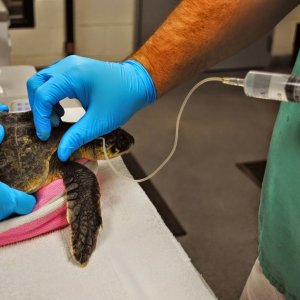How dangerous is Mexico?
On average, it is about five times more dangerous than the US. But that is an average, and as you should all know by now, averages are not particularly robust to outliers.
The US has an average intentional homicide rate of approximately 4.7 (per 100,000 people). Mexico’s rate is about 23.7. That is indeed a LOT higher. But it doesn’t tell the whole story. Remember, that if 8 people in a town make $10,000 a year and two make $100,000 a year, the average income for the town is almost $30,000 – and clearly not representative of the situation in that town. The same is true here. In 2010, the last year I could find complete statistics for all US states and territories, there was quite a bit of variation.
- New Hampshire – 1
- Vermont – 1.1
- Iowa – 1.2
- Wyoming – 1.4
- Idaho – 1.4
- South Carolina – 5.7
- Mississippi – 6.9
- Missouri – 7.0
- Maryland – 7.4
- Louisiana – 11.0
- District of Columbia – 21.8
- Puerto Rico – 26.22
You can see there is quite a bit of variance between the states with the fewest cases of intentional homicide and those with the most. South Carolina falls somewhere in between.
The same is true in Mexico. The following also represent rates of intentional homicide per 100,000 people per state in 2010.
- Yucatan – 2
- Queretaro – 3
- Tlaxcala – 4
- Veracruz – 5
- Aguascalientes – 6
- Nayarit – 38
- Guerrero – 48
- Durango – 66
- Sinaloa – 85
- Chihuahua – 111
While the rate of violent crime in Chihuahua is staggering, Veracruz, the state we will be traveling to, has one of the lowest rates of intentional homicides in Mexico – lower than in SC! In fact, your Mexican destination is statistically safer than if you were going to be an intern in DC for the summer. And the crime rate in most parts of Mexico has fallen since these 2010 numbers. You can see in this Fox Latina! report that in some areas, like Tijuana, the crime rate has dropped drastically and American tourists are starting to return. In fact, about 5 million Americans visit Mexico every year. So, where are these ultra violent Mexican states? The following map shows how Mexican states’ murder rates compare to the national average.
 |
|||||||
| Veracruz is the long, thin, dark purple state along the lower edge of the Gulf | of Mexico. |
You can find that map and others related to Mexico here. There is another interesting view on the subject from the same website. They have the following map from the “Institute of Economics and Politics” showing what they called the “Peace Index”.
With either view, you can sea that Veracruz is a very peaceful state. Don’t think this doesn’t mean that there isn’t crime in Veracruz, there most definitely is. And there are homicides related to drug trafficking there to be sure. But there are drug crimes related to drug trafficking in SC as well, we are just more familiar with the area and know the places to avoid. In Mexico, while you need not be terrified of everyone around you, it certainly helps to be aware of your surroundings since we are much less familiar with where “good” and “bad” areas are. Part of being aware means avoiding alcohol and not getting involved with the bar scene. Despite being the legal drinking age in Mexico, you will not be taking trips to bars. We will also travel in groups. No one will be traveling alone. Ever.
The most dangerous part of the trip will be in Mexico City. Mexico City is a very large city – metro Mexico City has 21.2 million people, making it the third largest city in the world behind Tokyo and Seoul, and ahead of NYC. There are many immigrants from further south in Central America and some of them panhandle. But there are many police – nearly one on every corner. Last summer I walked all day, by myself, for two days, and my traveling partner and co-PI on this research project walked by himself for an additional day. Never once did we feel threatened or worried. I spoke to many strangers and all greeted me with a smile and tried to understand my Spanish and help me out. Everyone was incredibly friendly. Even the panhandlers were quite polite. Again, safe travel is a matter of being aware of your surroundings and not venturing into areas that are overly crowded, or away from tourist areas. Our hotel will be within a block of most of what we will see and we will take hotel transportation to other attractions. We will remain together for the entire time we are walking around the city and will be traveling to destinations that I have already visited and can confirm are safe. Of course, I didn’t really find any places in Mexico City that were unsafe. I know there are many, but there are so many interesting and safe places near downtown that we won’t even have time to get in trouble. The museums are modern, first rate and amazing. The archeological ruins are conveniently located right across from where we will be staying and directly in the heart of the city. Even the amazing Cafe de Tacuba is only a few short blocks away.
The other part of the trip that may worry some is the travel. If you look at the maps above you can find the states of Hidalgo and Puebla. Those are the two states that we will cross to get to our destination in Veracruz. We will be traveling on a newly constructed toll highway. It has a large amount of traffic and there are armed guards at all of the tolls. This is a major thoroughfare between Mexico City and the tourist areas along the coast. The local people along the way are used to catering to tourists and are very welcoming.
The worst part about Mexico is the incredible poverty as you move away from downtown Mexico City. And intense poverty breeds desperation, and desperation leads to crime. So, while we are taking every precaution possible to stay safe, it isn’t completely free of danger. It is important to stay aware, avoid wearing flashy clothes or jewelry and not to flash large sums of money. Remember how relatively rich you are and put yourself in their shoes. The more you try to blend, rather than gawk and point, the more readily you will be accepted.
You should also sign up for the Smart Traveler Enrollment Program at the US Department of State.
If anyone’s parents have any additional questions about our travel plans or safety, feel free to have them email me and we can set up a time to talk about the trip.


